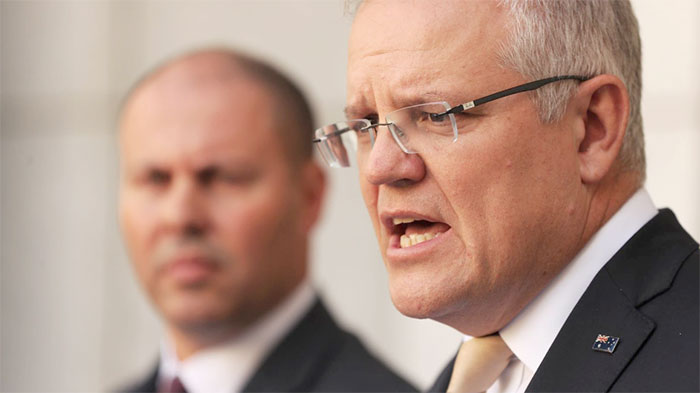JobKeeper extended to March following hospitality industry’s pleas for help

JobKeeper and JobSeeker payments will be extended to March 2021.
An address to the nation by the Federal Government on Tuesday 21 July, two days before Treasurer Josh Frydenberg’s mini-budget announcement, confirmed stimulus payments would extend beyond the original September deadline.
While the extension has been welcomed by industry, JobKeeper will move to a two-tiered system as the government seeks to claw support back from industries for whom assistance is no longer required.
Before the announcement, Australia’s hotels, motels and accommodation providers took out a series of full page ads in the form of an open letter to the Prime Minister, Premiers and Chief Ministers pleading for the government to extend JobKeeper, the Rental Mandatory Code of Conduct and banking relief measures until March 2021.
“We write as the leaders of Australia’s Tourism accommodation sector which has been devastated by COVID-19. To secure the future of our industry it is essential that JobKeeper, the Rental Mandatory Code of Conduct and the banking relief measures are extended until March 2021.
Pre-Covid, the industry directly employed more than 113,000 Australians and contributed “more than half of the $47.5 Billion Tourism GDP”.
Leading up to the pandemic, the sector was a vital cornerstone of the Australian Tourism industry. Its workforce has now been halved. The financial losses have been enormous with income decreasing by more than 75% since the beginning of March this year.
“Even if the flattening-the-curve strategy is successful and we have open borders, our expected recovery in March 2021 will only be 50% of pre COVID-19 income.”
The letter was signed by 27 of Australia’s leading accommodation providers.
Treasury report found JobKeeper had to be extended
A long-awaited Treasury report into JobKeeper was released just prior to Tuesday’s announcement, revealing 3.5 million people across 920,000 businesses were supported by the wage subsidy between April and May.
The report, which was finalised at the end of June, but only recently released, stated payments under JobKeeper represented the equivalent of 7 per cent of Australia’s gross domestic product on a pro-rata basis since March.
“A three-month review of the JobKeeper payment found the scheme met its objectives, preventing widespread business closures and putting a brake on the job losses that commenced in the second half of March,” said Mr Frydenberg.
My Frydenberg called it an “economic lifeline” that will now be extended. Interestingly, a million casual workers scored a pay rise worth up to $7700 on JobKeeper.
JobKeeper will now be a two-tiered system
The Morrison government will cut the wage subsidy at the end of September to $1200 a fortnight for full-time workers and to $750 for part-time workers. This is down from the current single rate of $1500.
"We made the conscious decision to have a flat rate payment (when introducing JobKeeper) because we understood at that time that people were losing second and third jobs," Prime Minister Scott Morrison said.
"Ensuring we had one flat payment across the entire labour force ensured that we were protecting our social security system and you will also remember the great strains that that system was under early during the crisis."
The scheme will be extended to March 2021, but revised down at the end of December to $1000 for full-time workers and $650 for part-time workers –those with 20 hours of work a week or less.
“JobKeeper is doing its job and will continue to do its job through the decisions we're announcing today,” Morrison said.
“Already just over $30 billion has been provided in support through the JobKeeper Program to almost a million businesses – 960,000, thereabouts – supporting some 3.5 million employees.”
Morrison said the government’s review into JobKeeper found the scheme needed to continue, but it needed to become more targeted.
Businesses with turnover up to $1 billion are now required to show a 30 per cent drop, while those with more than $1 billion have to show a 50 per cent decline to be eligible for the scheme.
A renewed eligibility test of turnover will be conducted in October.
The JobSeeker coronavirus supplement will also be reduced to $250 for the last quarter of the year; the government will increase the income-free threshold for those on the dole to $300.
This allows those receiving unemployment payments to earn up to this amount without affecting their benefits.
"In the second phase, which will be at the end of September, we will be moving to a higher rate of job search," Mr Morrison said.
"We'll be reintroducing the assets test for eligibility for those payments and we'll be reintroducing assets waiting period at that time."
This means job seekers will be required to search for jobs at least four times a month: penalties apply for those who refuse a role offered to them.
"So if there is a job to be taken and a job that is being offered, then it is an obligation, a mutual obligation, for those who are on JobSeeker to take those jobs where they're on offer," Mr Morrison said.
Jonathan Jackson, 21st July 2020







